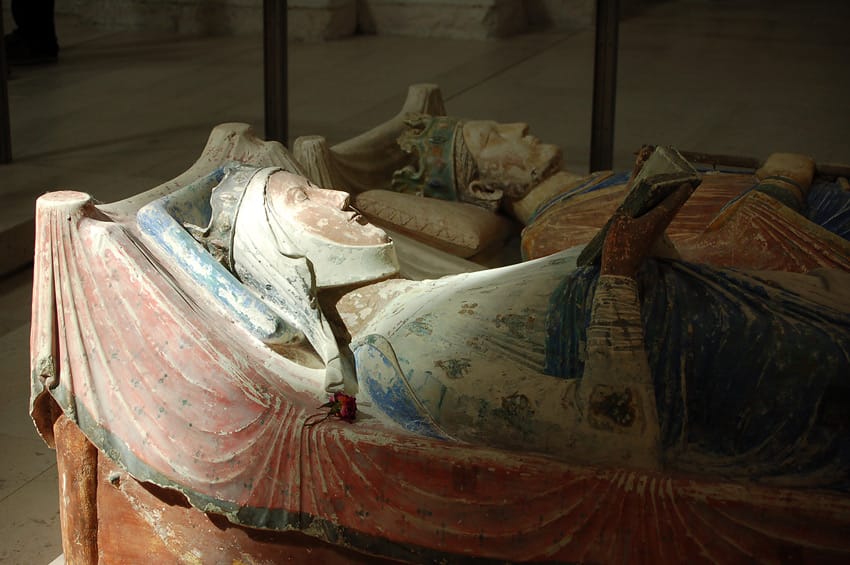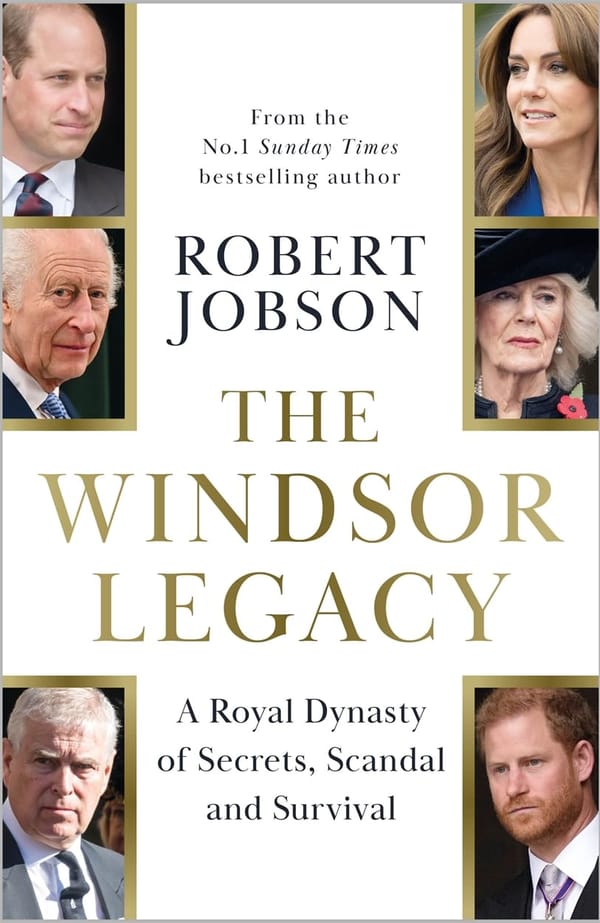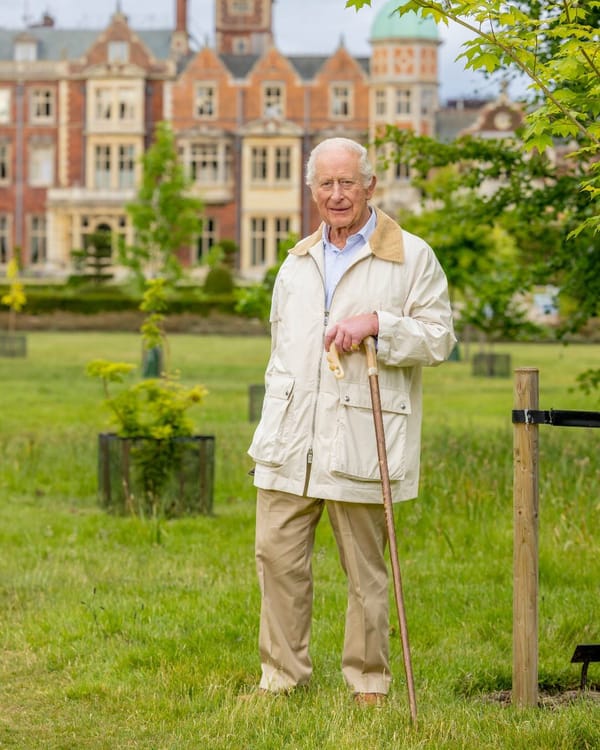Crown & Influence: Eleanor of Aquitaine - The Queen Who Ruled Two Kingdoms

Editor's Note: This is the beginning of an ongoing series of articles on notable members of the Royal Family through history who weren't the reigning monarchs.
Medieval Europe's most powerful woman shaped the destiny of England and France through marriages, rebellions, and an iron will that outlasted five monarchs
In an age when women were expected to be silent, obedient, and ornamental, Eleanor of Aquitaine commanded armies, governed kingdoms, and defied two of the most powerful kings in Christendom. As Duchess of Aquitaine in her own right, Queen of France, Queen of England, and mother to two English kings, Eleanor wielded more power and influence than perhaps any other woman in medieval Europe. Her extraordinary life—spanning eight decades and encompassing crusades, civil wars, imprisonment, and political intrigue—reads like fiction, yet her impact on the course of English and European history was profoundly real.
Duchess in Her Own Right
Eleanor was born around 1122 in southwestern France, the eldest daughter of William X, Duke of Aquitaine. Aquitaine was no minor territory—it encompassed roughly a quarter of modern France, stretching from the Loire Valley to the Pyrenees, and was wealthier and more cultured than the domains of the French king himself. The duchy was known for its troubadours, its sophisticated court culture, and its spirit of independence.
When her father died unexpectedly in 1137 during a pilgrimage to Santiago de Compostela, fifteen-year-old Eleanor inherited one of the most desirable territories in Europe. She became Duchess of Aquitaine and Countess of Poitiers in her own right—not merely through marriage, but through her own bloodline. This distinction would prove crucial throughout her life. Unlike most noblewomen of her era, Eleanor never lost her independent authority over her ancestral lands, even as she married kings and bore princes.
Within months of her inheritance, Eleanor married Louis VII of France, a match arranged before her father's death. She brought Aquitaine with her, instantly making the French crown far wealthier and more powerful. But the marriage between the worldly, educated Eleanor and the pious, ascetic Louis was troubled from the start.
Queen of France and Crusader
As Queen of France, Eleanor shocked the conservative French court with her independence and sophistication. She maintained her own court, patronized poets and artists, and refused to adopt the demure demeanor expected of queens. When Louis VII decided to embark on the Second Crusade in 1147, Eleanor insisted on joining him—an unprecedented decision that scandalized many contemporaries.
Eleanor didn't go merely as a royal consort. She brought her own contingent of vassals from Aquitaine and, according to some accounts, wore armor and rode at the head of her troops. The crusade was a disaster militarily, but it proved a turning point in Eleanor's marriage. In Antioch, she spent considerable time with her uncle, Raymond of Poitiers, discussing strategy. Rumors swirled about the nature of their relationship, and when Eleanor sided with Raymond's strategic advice over her husband's wishes, Louis forcibly removed her from Antioch.
The marriage produced two daughters but no male heir, and by 1152, it was annulled on grounds of consanguinity—a convenient excuse that allowed both parties to escape an unhappy union. Crucially, Eleanor retained Aquitaine. At thirty, she was free, powerful, and wealthy—a dangerous combination in medieval politics.
The Angevin Queen
Within eight weeks of her annulment, Eleanor married Henry Plantagenet, Duke of Normandy and Count of Anjou, who was eleven years her junior. It was a love match as much as a political alliance, and it transformed the balance of power in western Europe. When Henry became King Henry II of England in 1154, Eleanor became Queen of England, and together they ruled an "Angevin Empire" stretching from Scotland to the Pyrenees.
For the first fifteen years of their marriage, Eleanor and Henry were partners in power. She bore him eight children, including future kings Richard I and John, and daughters who would become queens of Castile and Sicily. But Eleanor was far more than a royal broodmare. Henry frequently left her as regent, ruling England and Normandy in his absence. She held her own courts, dispensed justice, and managed the complex networks of vassalage that held the empire together.
Eleanor also became a great patron of the arts. Her court became the center of courtly love poetry and Arthurian romance. Poets like Chrétien de Troyes and troubadours from her native Aquitaine flourished under her patronage. She helped transform the brutal warrior culture of the Norman nobility into something more refined—creating many of the ideals of chivalry that would define the later Middle Ages.
The Great Rebellion
The partnership between Eleanor and Henry fractured in the 1160s. Henry's flagrant infidelities—particularly his relationship with Rosamund Clifford—humiliated Eleanor. More seriously, Henry's attempts to centralize power threatened Eleanor's authority in Aquitaine and the independence of her sons.
In 1173, Eleanor made a fateful decision: she supported her sons Henry, Richard, and Geoffrey in open rebellion against their father. The "Great Rebellion" saw Eleanor actively working to overthrow Henry II, encouraging her sons and rallying her vassals in Aquitaine. It was an extraordinary act of defiance—a queen consort leading a civil war against her husband and king.
The rebellion failed. Henry's forces captured Eleanor in 1174, allegedly while she was attempting to reach the court of her former husband Louis VII in Paris, disguised as a man. Henry's revenge was severe: he imprisoned Eleanor for the next sixteen years.
Imprisonment and Survival
Eleanor's imprisonment was not dungeon confinement, but it was real restriction nonetheless. She was moved between various royal residences, held under guard, and prevented from exercising any political authority. For a woman who had ruled kingdoms, it must have been torture. Yet Eleanor survived, maintaining her dignity and, somehow, her influence. Her sons never forgot their mother, and Richard in particular remained devoted to her cause.
Henry II died in 1189, broken by continued conflicts with his sons. Richard I—the Lionheart—immediately freed his mother and restored her to power. At sixty-seven, an age when most medieval people were long dead, Eleanor embarked on the most remarkable phase of her career.
The Dowager Queen's Power
With Richard away on crusade and later imprisoned in Germany, Eleanor effectively ruled England and Normandy as regent. She raised the enormous ransom for Richard's release, outmaneuvered plotters who supported her youngest son John's bid for power, and maintained order across the Angevin domains. She traveled tirelessly despite her age, crossing the Pyrenees to Spain to fetch her granddaughter Berengaria as a bride for Richard, then crossing the Alps to personally escort her to Sicily.
When Richard died in 1199, Eleanor, now seventy-seven, worked to secure John's succession despite his poor reputation. She recognized that unity was essential to preserve the empire she and Henry had built. During John's early reign, she continued to serve as advisor and troubleshooter, personally defending Mirebeau Castle against rebels when she was eighty years old.
Legacy and Legend
Eleanor finally retired to Fontevraud Abbey in 1202, where she died in 1204 at the remarkable age of eighty-two. She had outlived all but two of her ten children and had seen four kings rule England during her lifetime.
Her impact on English and European history is difficult to overstate. Through her marriages, she transferred Aquitaine's vast territories first to France, then to England, setting up centuries of conflict that would culminate in the Hundred Years' War. Her sons Richard and John both became King of England, and through her daughters, she became ancestor to most of the royal houses of Europe.
Eleanor helped transform medieval culture, patronizing the literature and arts that defined courtly culture. The ideals of romantic love, chivalry, and refined nobility that she championed at her courts influenced European culture for centuries.
Perhaps most importantly, Eleanor demonstrated that women could wield real political power in the medieval world. She ruled kingdoms, led rebellions, shaped successions, and navigated the brutal politics of her age with skill that matched or exceeded her male contemporaries. She did all this while bearing ten children and surviving to an age few of her contemporaries reached.
In an era when women were supposed to be powerless, Eleanor of Aquitaine proved that intelligence, determination, and political acumen could overcome even the strictest limitations of medieval society. She remains one of the most fascinating and influential figures in British royal history—a queen who never reigned as monarch, but whose power and influence shaped the destiny of kingdoms.
Her tomb effigy at Fontevraud shows her reading a book—a fitting memorial to a woman who was not only politically astute but intellectually formidable. Eleanor of Aquitaine lived multiple lives, any one of which would be extraordinary. Together, they made her one of the most remarkable figures of the Middle Ages and a woman whose legacy echoes through British history to this day.




